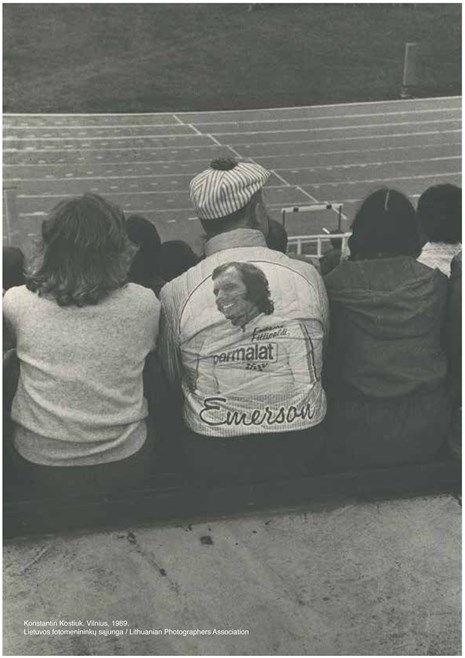Outsiders's Look on Vilnius

Foreign painters bypassed Vilnius for almost six hundred years. While the capitals of other vanished empires, such as Rome, attracted crowds of overseas artists, Vilnius was mostly ignored - with rare exceptions - even by locals who discovered the city's beauty only in the 19th century. It took a geopolitical tragedy, the First World War and the city occupation in 1915, to start closely observing, studying, drawing and painting Vilnius by a dozen foreign artists - propagandists of the Kaiser's German army. For these painters, the war tourists, Vilnius was an exotic discovery: A poor yet charming city with strange inhabitants worthy of a closer look. The process took three years and left us with a rich collection of quality artefacts - paintings, graphics, and photographies.
The location of Lithuania and Vilnius - sandwiched between two aggressive superpowers, the German Reich and Soviet Russia - meant that the second wave of foreign artists was shaped by another global catastrophe, the Second World War. Paradoxically, this time too, Vilnius - a mysterious foreign body of the Soviet Union with a Western character - seemed exotic to artists coming from the East. Soviet-occupied Vilnius was of particular interest to photographers: During the 1970s, Lithuanian photography was at the vanguard of Soviet photography and attracted the interest of professionals from various republics. Many photographers from different parts of the Soviet Union came to meet with Antanas Sutkus, Vitas Luckus and other masters. During those trips, they observed and recorded the everyday life of Vilnius - the unexpected results of these observations are obvious illustrations of a foreigner's gaze.
The third wave of foreign artists was triggered - just like in previous times - by another geopolitical breakthrough. What was new was that the turning point of March 11, 1990 led to the era of modernity. The emergence of a new institution in independent Lithuania, the Contemporary Art Centre (CAC), has also changed the observation tactics of foreign artists. The focus of 'seeing' shifted as well: In the photographs, videos, and various performances of the artists invited by CAC, Vilnius is shown not only through the prism of an outsider's gaze, but also using the filter of artistic research. Created during the transition period, from 1990 to the gradual integration into the EU, the collection of works of Vilnius seen by international artists is another fascinating story in a relatively short - and not yet finished - history of foreigners and their views of the city.
Curators: Andrei Antonau, Kęstutis Kuizinas, Laima Laučkaitė, Valentyn Odnoviun
Artists: Pawel Althamer, Pierre Bismuth & Johnatan Monk, Daniel Bozhkov, Walter Buhe, artist collective "Chim↑Pom", Alfred Holler, Konstantin Kostiuk, David Mabb, Flávia Muller Medeiros, Ivan Medvedev, Group "Province" (Galina Moskaleva and Vladimir Shakhlevich, Sergey Kozhemyakin, Uladzimir Parfianok), Yuri Rupin, Barbara Visser, Mirjam Wirz, Vita Zaman, Magnus Zeller, Edwin Zwakman
Exhibition designer: Mindaugas Reklaitis
Graphic design: Laura Grigaliūnaitė
Coordinators: Eglė Mikalajūnė, Ernestas Parulskis, Gabrielė Radzevičiūtė
Organisers: The Lithuanian National Museum of Art, National Gallery of Art, Contemporary Art Centre
Partners: German-speaking Community of Belgium, Aschersleben Museum, Museum of Kharkiv School of Photography, Vilna Gaon Museum of Jewish History, M. K. Čiurlionis National Museum of Art, Lithuanian Photographers Association
Sponsors: Office of the Government of the Republic of Lithuania, Exterus, Fundermax
Media sponsor: Vilnius: 700 Years Young, JCDecaux


